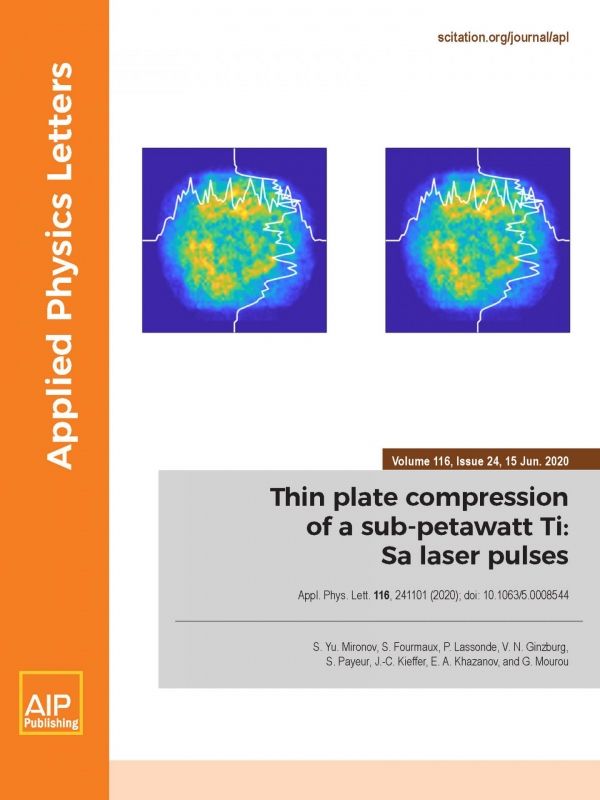Towards Lasers Powerful Enough to Investigate a New Kind of Physics
In a paper that made the cover of the journal Applied Physics Letters, an international team of researchers has demonstrated an innovative technique for increasing the intensity of lasers. This approach, based on the compression of light pulses, would make it possible to reach a threshold intensity for a new type of physics that has never been explored before: quantum electrodynamics phenomena.
Since the invention of frequency drift amplification in 1985 by Donna Strickland and Gérard Mourou, laser power has increased phenomenally, to finally reach a limit in the last years. Many research groups are amplifying the energy of the laser to increase its power, but this approach is expensive and requires beams and optics that are very large, more than a metre in size.
Researchers Jean-Claude Kieffer of the Institut national de la recherche scientifique (INRS), E. A. Khazanov of the Institute of Applied Physics of the Russian Academy of Sciences and Gérard Mourou, Professor Emeritus of the Ecole Polytechnique in France, who was awarded the Nobel Prize in Physics in 2018, have chosen another direction to achieve a power of around 10^23 Watts (W). Rather than increasing the energy of the laser, they decrease the pulse duration to only a few femtoseconds. This would keep the system within a reasonable size and keep operating costs down.
Read more at: Institut National de la Recherche Scientifique - INRS
The paper "Thin plate compression of a sub-petawatt Ti:Sa laser pulses" made the cover of the journal Applied Physics Letters, Volume 116, Issue 24 published June 15, 2020. (Photo Credit: AIP Publishing)


